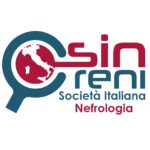
Do not perform creatinine clearance tests in situations where it is impossible to ensure an accurate urine collection, or when it is not necessary to measure urinary creatinine excretion. In such cases, it is preferable to assess renal function by calculating the eGFR (the volume of the filtrate).
Clearance (or the volume of plasma from which a given substance – creatinine in the case in point – is completely removed per unit of time) is measured using a mathematical formula comprising four factors: blood creatinine concentration; urinary creatinine concentration; urinary volume; and time (24 hours, or 1440 minutes). Creatinine clearance is expressed in milliliters per minute, and corrected for body surface area.A variation in any one of these parameters gives rose to unreliable values. Among the four factors, the one most likely to vary, and consequently the source of countless practical errors, is urinary volume, based on urine collected over 24 hours. The first urine in the morning should be discarded, then all urine is collected up until the patient wakes the next morning. For people working away from home or students, 24-hour urine collection can pose a problem, and partial collections lead to errors in the calculation of urinary creatinine clearance. Any clean container can be used, providing it is large enough to hold all the urine produced in 24 hours. Bringing a part of the whole urine collection is not enough. Since inaccuracies are extremely common, it is preferable to use formulas based on validated statistical models that take into account the patient’s different variables (age, gender, race, etc.).
Sources
1. Estimating the glomerular filtration rate from serum creatinine is better than from cystatin C for evaluating risk factors associated with chronic kidney disease. Rule AD, Bailey KR, Lieske JC, Peyser PA, Turner ST. Kidney Int 2013 Jun; 83(6): 1169-76.
2. Canadian Society of Nephrology commentary on the KDIGO clinical practice guideline for CKD evaluation and management. Akbari A, Clase CM, Acott P, Battistella M, Bello A, Feltmate P, Grill A, Karsanji M, Komenda P, Madore F, Manns BJ, Mahdavi S, Mustafa RA, Smyth A, Welcher ES. Am J Kidney Dis 2015 Feb; 65(2): 177-205.
Attention. Please note that these items are provided only for information and are not intended as a substitute for consultation with a clinician. Patients with any specific questions about the items on this list or their individual situation should consult their clinician.


Recent Comments